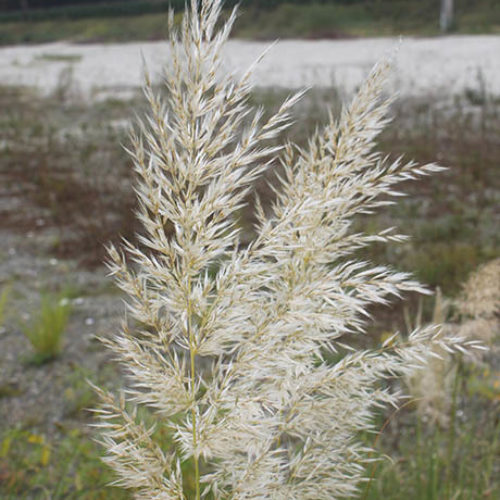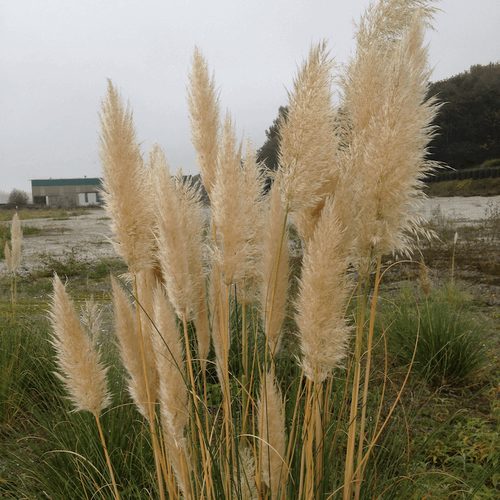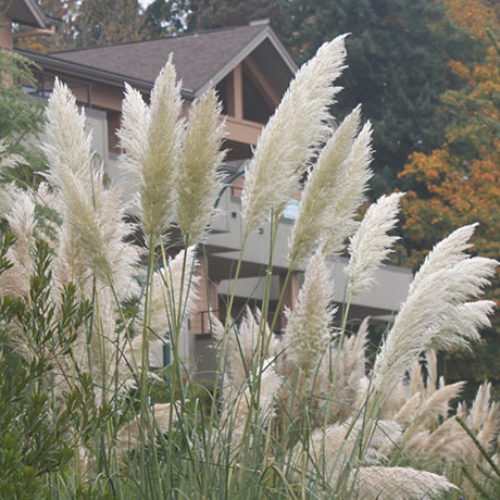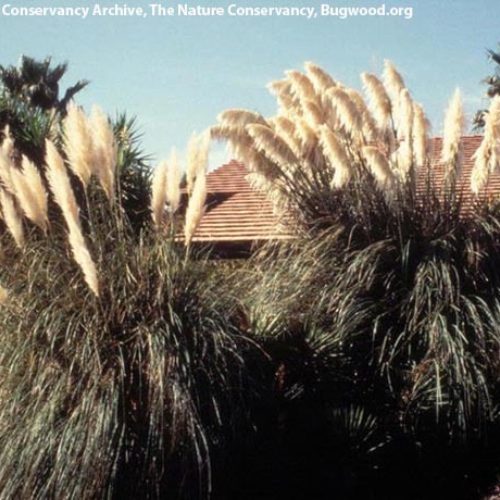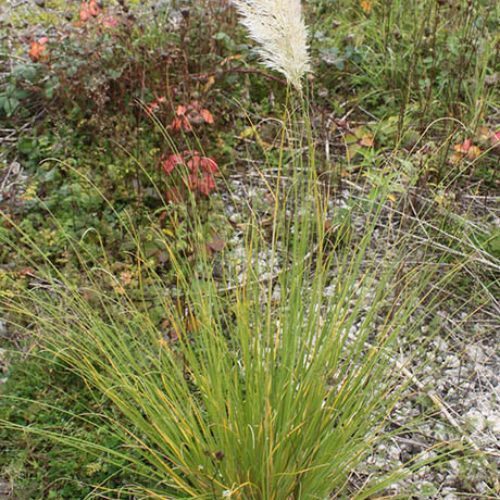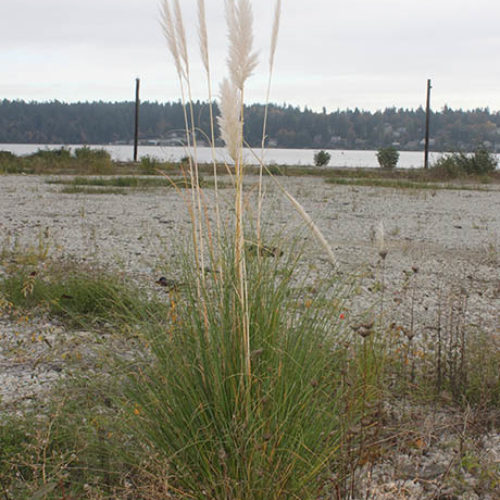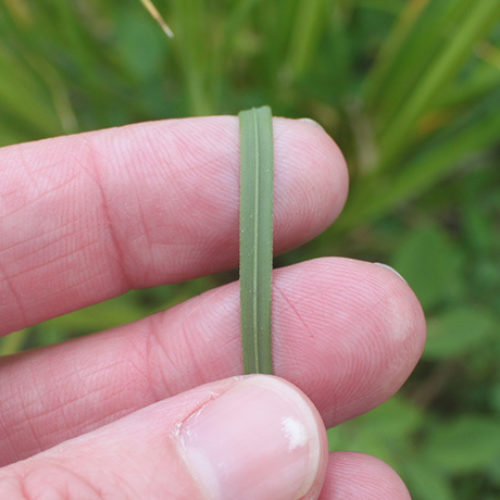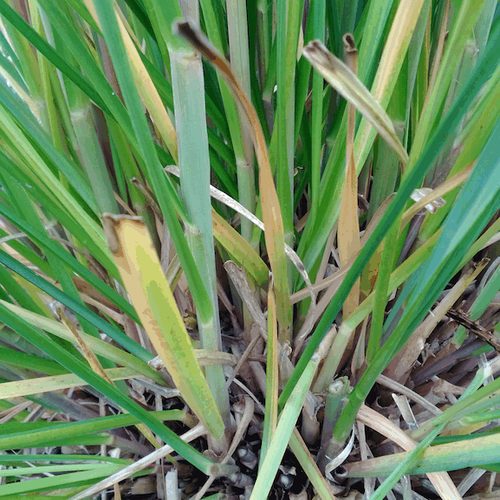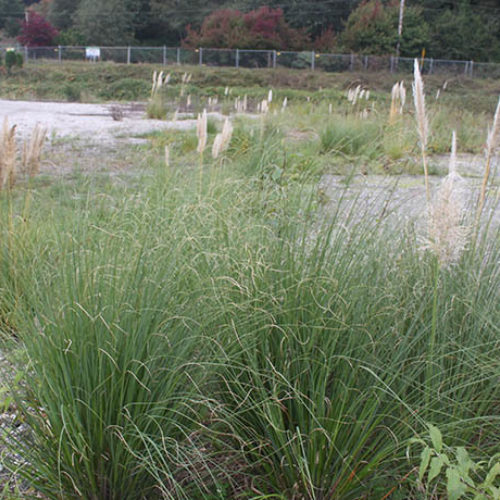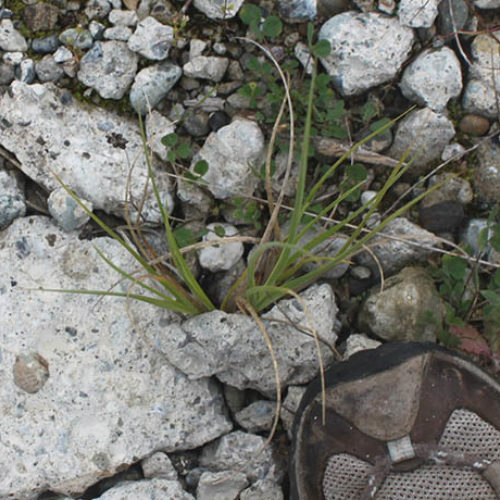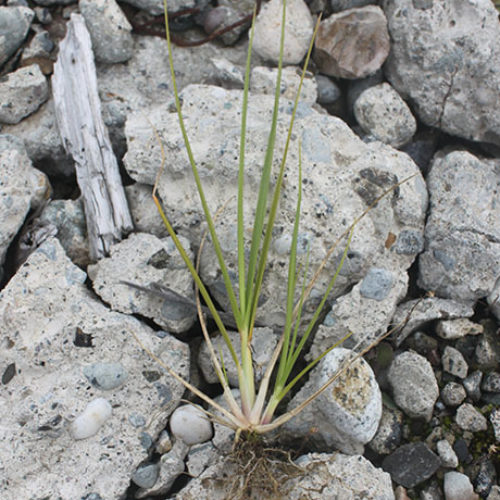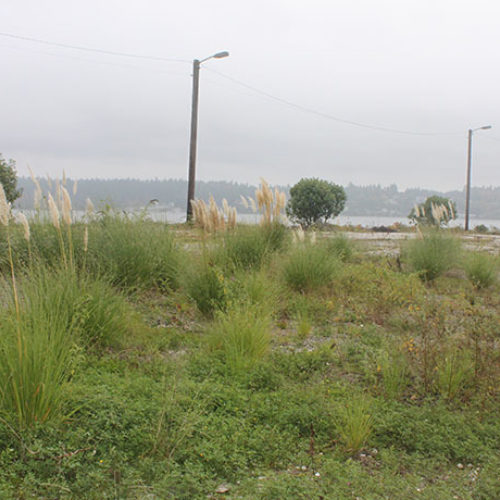Pampas Grass
Cortaderia selloana
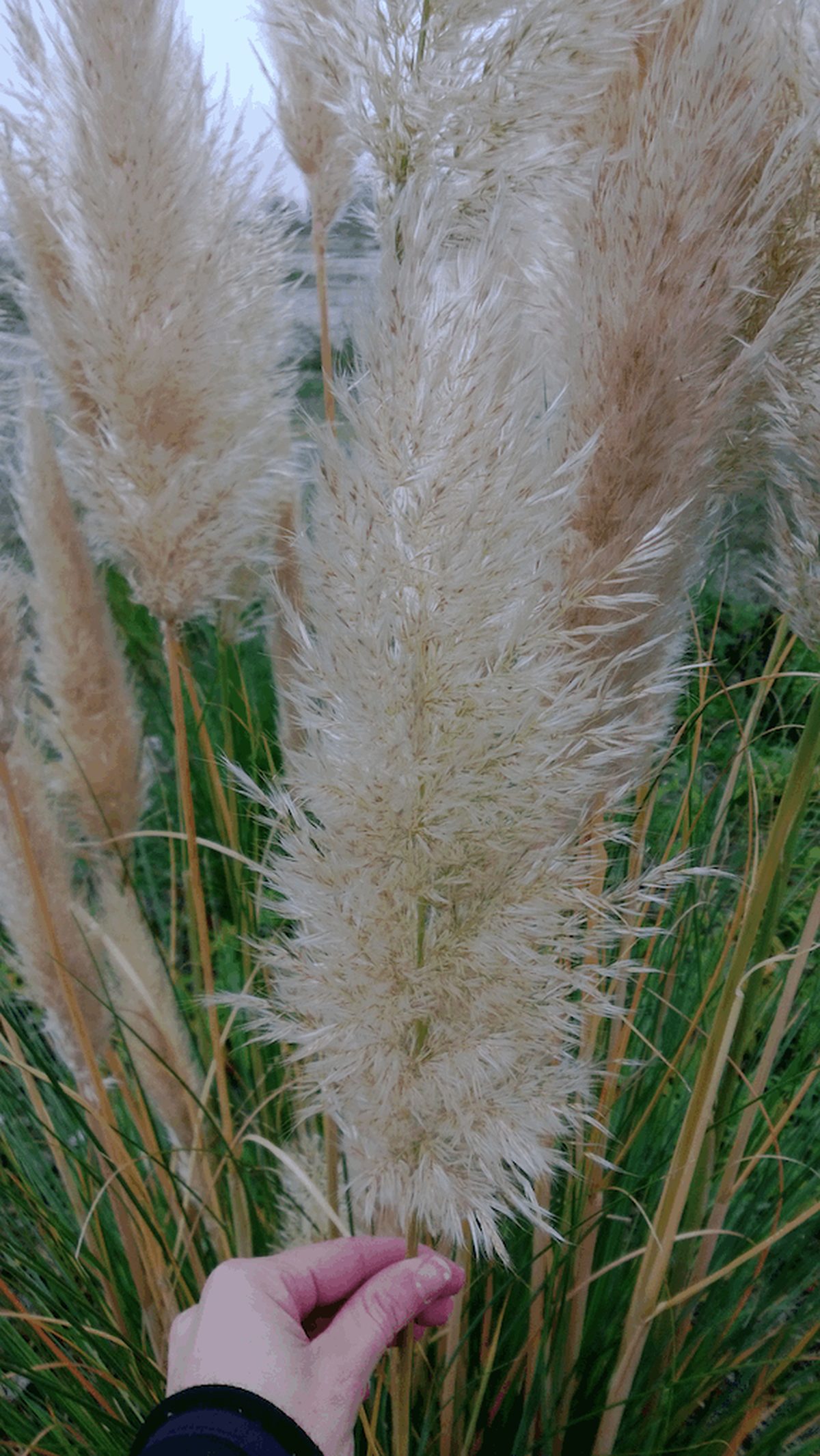
Family: Poaceae
Other Common Names: Uruguayan pampas grass
Weed class: C
Year Listed: 2015
Native to: Argentina, Brazil and Uruguay
Is this Weed Toxic?:
not known to be
Why Is It a Noxious Weed?
Pampas grass is a nonnative species used in ornamental plantings in Washington and is a known invasive species in California and is escaped in Oregon. In 2014, escaped populations of pampas grass were discovered in Washington State, with one infestation having almost 500 plants. Due to its apparent recent spread, its ability to crowd out desirable plant species and the range of conditions it can establish and survive, pampas grass is listed as a Class C noxious weed.
How would I identify it?
General Description
It is a large perennial grass that grows in clumps called tussocks. Basal clumps of long, narrow leaves have sharp edges and grow to around 4 feet tall, and upright stems grow out of the tussock, up to 6 to 13 feet. Plumes of flowers bloom at stem tips, ranging in color from white, silver, cream, pink to violet. After seeds develop and spread, stems with old flowers remain through the winter.
Flower Description
Plants either have all female flowers or all hermaphroditic flowers. The hermaphroditic flowers function primarily as a pollen source, and so are often referred to as male flowers. Female plants need to be pollinated by hermaphroditic plants to produce seed. The inflorescence, called a plume, is a panicle and ranges in length from 1 to 3 feet.
Leaf description
Leaves form a rounded tussock. Leaf blades are up to 6.6 feet long and have a prominent midrib. Leaf margins have sharp teeth, which readily cut skin. Leaves are bluish-green, their upper surfaces glabrous at base and their lower surfaces glabrous or hair toward the collar. Leaf sheaths are variable in their hairiness and the ligules consists of a dense ring of hairs.
Stem description
Stems, called culms, are stiff and grow to 6.6 to 13.1 feet (2 to 4 m) tall. The culms are usually 2 to 4 times as long as the inflorescence and are equal to or slightly longer than the tussock.
Fruit Seed Description
The fruit is a dry, one-seeded fruit, 1 to 3mm in size. The estimated mean number of seeds produced per plant, counted from escaped pampas grass plants, was 416,399, ranging from 54,567 to 840,905 per plant.
May Be Confused With
Class C noxious weed jubata grass, Cortaderia jubata, is very similary in appearance to pampas grass. Ravenna grass, Saccharum ravennae, a Class B noxious weed, is also similar to pampas grass. See their detail pages and Written Findings for more information.
Where does it grow?
Pampas grass can invade a wide variety of habitats, including pastures, roadsides, shrublands road-cuts, logged forests, coastal shrub and grasslands (including serpentine soils), coastal sand dunes, bluffs, marshes and wetlands, inland riparian areas, and shrublands. It can grow in away from the coast where sufficient moisture is available. Please click here to see a county level distribution map of Pampas grass in Washington.
How Does it Reproduce?
Plants spread by seed. Seeds are very light and can be dispersed in the wind and by human activity. Vegetative spread can occur when fragmented roots receive adequate moisture and develop adventitious roots.
How Do I Control It?
General Information
When working with pampas grass, it is important to protect yourself when handling the plants. Leaf edges of pampas grass are very sharp, so make sure to wear leather gloves and protective clothing. Seed germination appears to be positively affected by soil disturbance so any control method that disturbs the soil could encourage seed germination. Plant or seed bare ground with native or non-invasive, non-native plants to provide competition. Instead of planting pampas grass in ornamental plantings, use non-invasive alternatives, such as Calamagrostis acutiflora ‘Karl Foerster’ or Stipa gigantean, giant needle grass.
Manual/Mechanical Control
Cut and bag inflorescences prior to mechanical control to prevent spreading seed. Pulling or hand-grubbing seedlings can provide effective control. For larger plants, a Pulaski, mattock or shovel are the safest and most effective tools for removing established clumps. The entire crown and top section of the roots will need to be removed to prevent resprouting.
Cultural Control
Soil disturbance that creates bare ground can promote invasion, so it is important to minimize disturbance or provide competition to seedlings. Apply mulch to exposed bare ground to smother seeds and prevent germination. Also, planting or seeding desirable, non-invasive plants can provide competition to reduce germination and seedling establishment.
Biological Control
There are no approved biological control agents for pampas grass.
Herbicide Control
Please refer to the PNW Weed Management Handbook, or contact your county noxious weed coordinator.
For More Information
See our Written Findings for pampas grass Cortaderia selloana
Thurston County NWCB Fact Sheet on pampas grass
Whatcom County NWCB Fact Sheet on pampas grass



